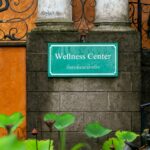Unlocking Better Health: Why Nutrition Literacy Matters More Than Ever


Photo by Sacre Bleu on Unsplash
Introduction: Nutrition Literacy as a Foundation for Better Health
In a world with overwhelming food choices, constant marketing, and a complex food environment, the ability to understand and use nutrition information-known as nutrition literacy -has become more important than ever. Nutrition literacy is not just about knowing which foods are healthy; it encompasses understanding how dietary choices affect personal and societal health, the ability to interpret food labels, and the knowledge of the broader cultural, economic, and environmental impacts of what we eat [1] . This article explores why nutrition literacy is essential, how it benefits individuals and communities, and what actionable steps you can take to improve it for yourself and those around you.
1. What Is Nutrition Literacy?
Nutrition literacy is a comprehensive concept that integrates elements of health literacy and food literacy. It refers not only to acquiring knowledge about nutrients and healthy eating guidelines, but also to understanding food labels, evaluating food marketing, and recognizing the social and cultural contexts of eating [1] .
This literacy enables individuals to:
- Make informed dietary choices based on accurate information
- Understand the reasons behind dietary recommendations
- Interpret food packaging and nutritional labels
- Navigate complex food environments and advertising
- Recognize the environmental and social impact of food choices
Nutrition literacy operates at multiple levels-personal, interpersonal, and societal-making it a critical skill for healthy living and community well-being [1] .
2. Benefits of Nutrition Literacy for Individual Health
High nutrition literacy is associated with a range of positive health outcomes. Those who can accurately interpret nutrition information tend to choose healthier foods, maintain better weight management, and reduce risks linked to chronic diseases such as obesity, diabetes, and heart disease [2] . For example, studies have shown that children exposed to simple food labeling (such as emotive icons indicating healthy choices) select more nutritious foods even when less healthy options are present [2] .
Further, people with a strong grasp of nutrition are more likely to:
- Read and understand food labels and ingredient lists
- Resist misleading food marketing or fad diets
- Plan balanced meals that suit their health needs
- Recognize portion sizes and manage caloric intake
Improved nutrition literacy can thus empower you to make daily choices that support long-term well-being.
3. Societal and Economic Impacts of Nutrition Literacy
Nutrition literacy extends beyond personal health. When communities understand nutrition, they are better equipped to address public health challenges like obesity and malnutrition. For example, community farming and cooking education programs have been shown to increase food literacy and foster healthier eating habits among children and adults [1] . These interventions can also influence food-related preferences and behaviors, leading to reduced health care costs and improved quality of life at a societal level.
Additionally, nutrition literacy supports:
- Food security by helping individuals and families make the most of available resources
- Sustainability, as people understand the impact of food choices on the environment
- Cultural preservation by appreciating traditional dietary practices in a modern context
By fostering nutrition literacy, communities can create healthier, more sustainable, and economically resilient societies.
4. Real-World Examples and Case Studies
Several successful initiatives highlight the tangible benefits of nutrition literacy. For example, a preschool program in Australia introduced weekly food literacy sessions led by dietitians and educators. After participating, over 70% of children asked for and ate more vegetables, and both parents and staff observed improved food knowledge and habits among the children [2] .
Another approach involves engaging families in cooking classes and community gardening projects. These hands-on experiences teach practical skills, build confidence in the kitchen, and foster a deeper understanding of where food comes from and how to prepare it nutritiously [1] . Such programs have shown positive effects on both children’s and adults’ eating behaviors, suggesting that experiential education is a powerful tool for improving nutrition literacy.

Photo by lucas Favre on Unsplash
5. Steps to Improve Your Nutrition Literacy
Improving nutrition literacy is an achievable goal for anyone, regardless of age or background. Here are step-by-step strategies and alternatives to build your nutrition knowledge and skills:
- Start with Credible Information: Use resources from recognized organizations such as the Centers for Disease Control and Prevention (CDC) or the U.S. Department of Agriculture (USDA) . These sites provide evidence-based guidance on healthy eating, meal planning, and understanding nutrition labels.
- Learn to Read Food Labels: Practice interpreting nutrition facts panels and ingredient lists. Focus on understanding serving sizes, calories, fats, sugars, and sodium content. Reliable guides are available on the CDC and USDA websites.
- Participate in Community Programs: Many local health departments, community centers, and cooperative extension offices offer free or low-cost nutrition workshops, cooking classes, and gardening projects. To find these opportunities, search your city or county health department site or contact your local cooperative extension office.
- Engage Children Early: Involve children in food shopping, meal preparation, and gardening. Programs that use visual aids or interactive tools have proven effective in teaching children about healthy choices [2] .
- Seek Professional Guidance: Registered dietitians and nutritionists can provide personalized advice. To find a qualified professional, visit the Academy of Nutrition and Dietetics website at eatright.org and use their “Find a Nutrition Expert” feature.
- Stay Informed and Critical: Be cautious with nutrition information from social media or unverified sources. Always cross-reference claims with reputable organizations or peer-reviewed research.
If you have difficulty finding local programs, you can:
- Contact your city or county health department and ask about nutrition education opportunities
- Search for “community nutrition classes” or “cooking workshops” in your area
- Ask your healthcare provider for referrals to reputable programs
6. Overcoming Common Challenges
Barriers to improving nutrition literacy may include limited access to reliable information, language differences, low motivation, or busy lifestyles. Solutions to these challenges include:
- Access: Use free online resources from government agencies and universities. Libraries often offer nutrition education materials or workshops.
- Language: Look for materials in your preferred language. The CDC and USDA provide some resources in Spanish and other languages.
- Motivation: Set small, achievable goals, such as learning to cook one new healthy recipe per week or reading one nutrition label each shopping trip.
- Time: Choose quick, practical learning formats like short videos, mobile apps, or podcasts from reputable sources.
7. The Role of Schools and Communities
Schools and communities play a vital role in fostering nutrition literacy. Integrating nutrition education into school curricula, offering after-school cooking programs, and providing healthy food options in cafeterias can help children develop lifelong healthy habits [1] . Community gardens and local food co-ops also serve as hands-on learning environments where people of all ages can gain practical skills and appreciation for nutritious foods.
If you are a parent, educator, or community leader, consider advocating for or volunteering with programs that promote nutrition literacy. For information on starting such initiatives, visit your local cooperative extension office or public health department and search for “nutrition education programs” or “school wellness policies.”
Conclusion: Nutrition Literacy Empowers Healthy Choices
Nutrition literacy is a vital tool for personal and community health. By understanding the impact of dietary choices and acquiring the skills to navigate today’s food environment, individuals can make informed decisions that benefit their well-being and contribute to a healthier society. Whether you begin by reading food labels, joining a cooking class, or simply asking questions about the foods you eat, every step toward better nutrition literacy is a step toward better health.






